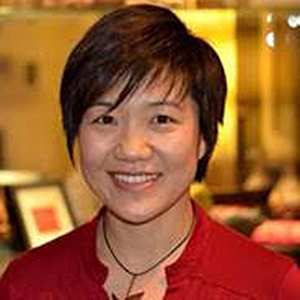
Esther Hurh
As the facilitator of the most recent Echoes and Reflections Online Professional Development course, Esther Hurh helped introduce over two dozen teachers to teaching with testimony for the first time.
Hurh has worked with the Anti-Defamation League (ADL) in a variety of roles for over 15 years, including as the director of training and curriculum development in ADL’s education department. She is currently an education and curriculum consultant for Echoes and Reflections, ADL and other education and advocacy groups.
Educators are introduced to Echoes and Reflections through a three-part online professional development course Teaching the Holocaust – Online Learning for Teachers every month on teaching the Holocaust using testimony from the Visual History Archive and other primary and secondary sources.
The six-hour, three week program introduces learners to classroom-ready comprehensive print and online resources, sound pedagogy for teaching about the Holocaust, instructional pathways to help students learn about the complex history of the Holocaust, background information on the history of anti-Semitism and strategies to incorporate a range of primary sources, including visual history testimony, to classroom instruction.
As facilitator for one of the most recent courses, Hurh guided participants through the course, answered questions and provided feedback on their ideas. She estimated that about 35 teachers participated in the May course.
Her goal was to foster an engaging experience, with everyone learning from each other. She commented on the participants’ ideas to help them make connections and identified resources to augment the lesson plans and activities they were coming up with.
Hurh was able to create such a supportive learning environment that the participants engaged in a fascinating conversation about how to use the Holocaust to teach about bullying. Their comments were so enlightening that Echoes and Reflections produced a document about the subject to help guide other teachers who may be grappling with the same idea.
“Having the opportunity to read other people’s comments allowed [the participants] to think more carefully about what their position is” on connecting the Holocaust to bullying, Hurh said.
The participants loved watching testimony clips from the Visual History Archive and thinking about how they could incorporate them into their lessons, Hurh said.
“They loved the clip of Margaret Lambert and felt she humanized the story of the Holocaust,” Hurh said. “She was a person a lot of teachers felt students would connect to.” Lambert’s struggles against gender norms, conflicts with her parents and her strong willed teenage personality would be easily relatable to today’s students, they thought.
Kurt Messerschmidt’s story about picking up glass after Kristallnacht also resonated with teachers who felt it could teach students that inaction is also a form of action and get them to think about ethical dilemmas at play in the Holocaust.
Hurh said that what sets Echoes and Reflections’ online professional development course apart from others is the interaction among the participants and the ideas they are sharing with each other throughout the course.
It is also not intended to make teachers completely change their teaching or conform to a specific program; teachers are free to adapt Echoes and Reflections however it works best for them.
“I love it when I read teachers commenting [in the course] ‘I never thought of it that way,’ or ‘That’s a great way to frame that,’” Hurh said. “Echoes and Reflections is just another tool in their toolkit. So long as it’s useful to their teaching, it’s intended to be practical in nature.”